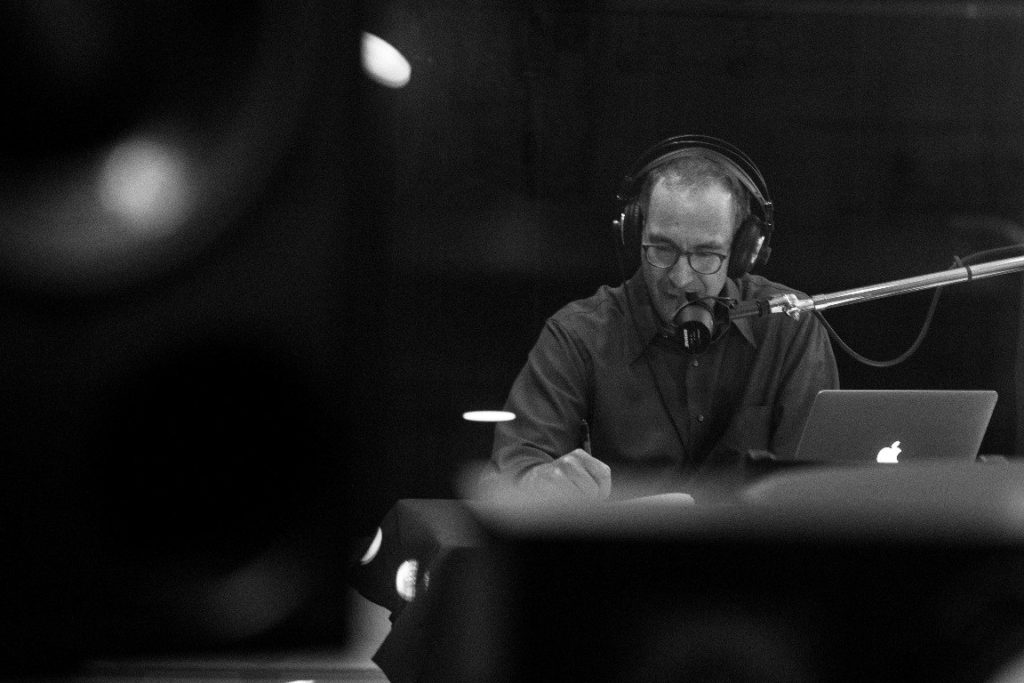Labor & Economy
Why The Future Of Gig Work Might Not Be As Bleak As Many Believe
On the latest episode of The Bottom Line podcast, Thumbtack CEO Marco Zappacosta discusses how those on his platform are happily earning about $75 an hour.

When people think of the kind of work they can hustle up via a digital platform, it’s often marked by completing “mind-numbing tasks for hours on end, sometimes earning just pennies per job,” in the words of one recent report.
Those who find work through Thumbtack, however, occupy a very different part of the online landscape.
“It is a part of the gig economy in the sense that . . . they go job to job,” Marco Zappacosta, the co-founder and CEO of the marketplace for home services and other professional freelance jobs, told me on the latest episode of my podcast, The Bottom Line. “But it is not the gig economy in the way that some people think of it, which is sort of these commodity labor platforms, be it ride-sharing or delivery.”
“These are really differentiated, non-commoditized services,” he says. “When you keep the focus on that, you really see . . . what the future of work holds.”
If Zappacosta turns out to be right, it’s actually a pretty bright future. The average wage for the plumbers, painters, caterers, dog trainers, tax preparers, and a thousand other types of “pros,” as Zappacosta prefers to call them, on Thumbtack is nearly $75 an hour.
They seem remarkably happy, too: Four in five on Thumbtack, the company’s surveying shows, say they love what they do.
“I think their pride comes from seeing that their talent is valued,” Zappacosta says. “It just feels good. And it gets to this fact that work is ultimately more than a paycheck. . . . It’s also about feeling purposeful.”
In this sense, many of the 250,000 folks offering their services on Thumbtack might be characterized more as entrepreneurs than as independent workers—and the company thus affords a fascinating glimpse into an often-overlooked slice of the American economy: what Zappacosta describes as “the smallest end of small businesses.”
Indeed, sixty-five percent of those on Thumbtack work alone; just shy of 30% have two to five employees.
For all of its upsides, trying to make a go of it on Thumbtack isn’t necessarily stress-free. Zappacosta acknowledges that inherent in hanging your own shingle is “less security” than what one might have in a traditional job.
With that in mind, the No. 1 priority for Thumbtack—which makes its money whenever a pro bids on work—is clear: “The first thing, and honestly the most important thing, is just to be a steady source for new customers . . . keeping their order book full,” Zappacosta explains. “Ideally, the dream is they tell us, ‘Hey, I want to find five to seven new customers a week . . . and Thumbtack is able to deliver on that request time and time again.”
At this point, he adds, Thumbtack is “better now than ever before” in meeting that vision. “But we’re still not as good as we need to be.”
Over time, Zappacosta has even bigger plans: becoming a source of back-office operations, and perhaps even health and retirement benefits, for those on Thumbtack. Another longer-term possibility is for Thumbtack to provide skills training.
Before any of that, though, Zappacosta figures that Thumbtack can at least begin to share information, which it routinely gleans, to help right the imbalance between supply and demand in various local service categories.
For example, “if you want to be a yoga instructor, do not move to San Francisco,” he advises. “San Francisco has a lot of yoga instructors. Move to Memphis, Tennessee. It turns out than in Memphis, there is a lot of demand for it and not enough pros.”
You can listen to my entire interview with Zappacosta here, along with Larry Buhl reporting on why entrepreneurship in America has been declining for so long, and Rachel Schneider commenting on the terrible toll exacted by the financial volatility that many families experience.
The Bottom Line is a production of Capital & Main.

-

 Latest NewsDecember 8, 2025
Latest NewsDecember 8, 2025This L.A. Museum Is Standing Up to Trump’s Whitewashing, Vowing to ‘Scrub Nothing’
-

 Striking BackDecember 4, 2025
Striking BackDecember 4, 2025Home Care Workers Are Losing Minimum Wage Protections — and Fighting Back
-

 Dirty MoneyDecember 3, 2025
Dirty MoneyDecember 3, 2025Trump’s Anti-Climate Policies Are Driving Up Insurance Costs for Homeowners, Say Experts
-

 Child FarmworkersDecember 5, 2025
Child FarmworkersDecember 5, 2025To Protect Underage Farmworkers, California Expands Oversight of Field Conditions
-

 Column - State of InequalityDecember 4, 2025
Column - State of InequalityDecember 4, 2025Can California Claw Back Some Medi-Cal Care?
-

 Latest NewsDecember 10, 2025
Latest NewsDecember 10, 2025Capital & Main, L.A. Times Win Sidney Award for Reporting on Child Farmworkers
-

 StrandedDecember 9, 2025
StrandedDecember 9, 2025Giving Up on the Dream: Asylum Seekers Try Other Options in Mexico
-

 Locked OutDecember 16, 2025
Locked OutDecember 16, 2025This Big L.A. Landlord Turned Away People Seeking Section 8 Housing

